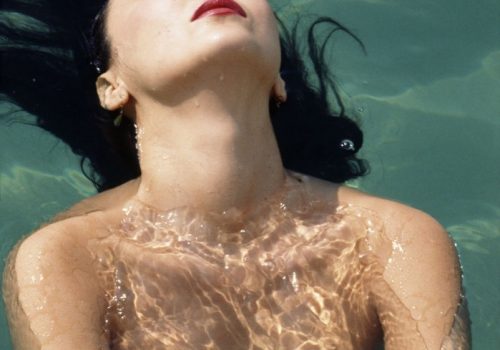“Since I was little, I’ve had sort of an disease: my memory was never able to hold on to anything that amazed me,” Lartigue wrote in his diary in 1965. That was all the incentive he needed to start accumulating and collecting, from the age of eight and over the next eighty years, thousands of fleeting moments.
It wasn’t until 1963 that Jacques Henri Lartigue—already aged sixty-nine—had his first exhibition at the Museum of Modern Art in New York, showcasing forty-three of over 100,000 pictures he had taken throughout his life. That same year, Life Magazine featured a portfolio of his photos which went around the world. He became an instant celebrity with his black-and-white images of the Belle Époque and the Roaring Twenties (elegant women in the Bois de Boulogne, car races, the early days of aviation…, etc.).
To his great astonishment, Lartigue, the dilettante who had thought of himself as a painter, had become, from one day to the next, one of the biggest names in twentieth-century photography. The exhibition Lartigue: Life in Color, on view in L’Isle-sur-la-Sorgue from October 28, 2017 to February 18, 2018, spotlights a previously unseen aspect of his work. Although color photography represents over a third of his total production, it has been rarely exhibited as such. It thus represents a true discovery, not only because the photographs on display had been hardly shown before, but also because they reveal a little-known and surprising facet of Lartigue.
Lartigue shot in color during two periods in his life. From 1912 to 1927, he tried his hand at autochromes. The exhibition includes thirty of the total of eighty-seven of these rare and precious images preserved by the Donation Lartigue. With youthful enthusiasm (at age 18) and a fascination for “new technologies,” Lartigue experimented with the autochrome process, a technique then recently commercialized by the Lumière brothers. The 6×13 stereoscopic glass plates he was using afford a 3D view of the chosen perspective. Color, movement, and depth are ways of capturing the intangible and life. However, the weight of the equipment and the long exposures compelled him to abandon this technique, and color photography with it.
After photographing in black and white for over twenty years, Lartigue once again picked up color film in 1949. With his Rolleiflex, he privileged the square format well into the 1970s, even while also using the 24×36 mm film with his Leica. Always true to himself, Lartigue continued to document his life and record precious moments: “Like a taxidermist, I preserve things that life offers me in passing” (handwritten diary, Paris, 1968). For example, happily married to the young Florette, he photographed her again and again.
The composition of his photographs is so successful that one might suspect they were staged or retouched, in a word “manufactured,” while in fact they are always the fruit of spontaneous activity and a reflection of his enjoyment of life. For this instinctive photographer, color celebrates joy and sensuality, and more than anything else, lends itself to the celebration of spring, of seasons, of the sky, and of the beauty of all sensual forms.
Whether young or in his old age, Lartigue always possessed a youthful spirit. People who have preserved such childlike freshness, curiosity, and capacity for wonder throughout their lives are few and far between. “Lartigue hasn’t aged a day since his first photo,” wrote René Barjavel in 1972. Does that explain the evident modernity of his photographs? Modernity which, it should be noted, is heightened by color to the point of lending it quasi-contemporary sensibility. An added proof: while they may date to the 1950s or 60s, these images are far from nostalgic. Their energy does not draw on the past, and Lartigue is definitely a “creature of the future.” “Aware of the responsibility of exhibiting over a hundred never before published photographs, and with the view of remaining true to Lartigue, we have made our selection based on Lartigue’s own choices,” explain the board of directors of the Centre d’art Campredon. “The albums he had compiled over the years allow us to preserve a trace of these choices. Select pages from these albums are also on view.”
Martine Ravache and Martine d’Astier
Martine Ravache is a historian of art and critic in photography, Martine d’Astier is director of the Donation Jacques Henri Lartigue.
Jacques Henri Lartigue, Life in Color
October 28, 2017 to February 18, 2018
Campredon centre d’art
20 Rue du Dr Tallet
84800 L’Isle-sur-la-Sorgue
France
















